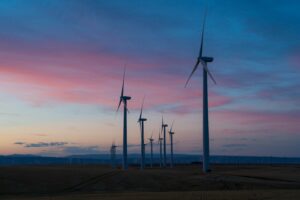A new report published Wednesday has shown that the total pipeline of floating offshore wind projects, globally, has more than doubled in the past 12 months, reaching a pipeline capacity of 185GW, including a decent contribution from Australia.
Floating offshore wind projects have increased over the last 12 months from 130 to 230, with a pipeline growing from 91GW to 185GW.
The new report, published on Wednesday by RenewableUK – the UK’s trade body for wind and marine energy and energy storage – highlights a pipeline of projects at any stage, be it operational, under construction, approved, planning, or at early stages of development.
UK and Europe lead the way
Unsurprisingly, given its long history as a pioneering wind energy developer, the United Kingdom leads the way, with a pipeline that has increased from 23GW to 33GW in the past 12 months.
A total of 51 projects are now in various stages of development, up from only 29 only a year ago, with projects in the North Sea, Celtic Sea, and the North Atlantic Ocean.

Globally, the 185GW pipeline of floating offshore wind projects includes 121MW of fully commissioned projects, located over 9 projects in 7 countries.
A further 96MW is currently under construction, another 288MW has been consented or is in its pre-construction phase, 31GW is in planning or already has a lease agreement, and 153GW is in early development or in the leasing process. Of the pipeline capacity, 107GW, or 58% is located in Europe.
Australia joins the rush
Notably, Australia is there in the mix with a respectable 13.8GW proposed floating offshore wind projects, a pipeline that is expected to continue to grow now that Australia finally has the necessary supporting legislation in place.
Among the proposed projects are OceanEx’s plans for some 7.5GW of floating wind projects at various locations off the coast of New South Wales, as well as another 2GW in Western Australian waters.
Also there is the Hunter Coast Offshore Wind Project, which was recently expanded by its developers, BlueFloat Energy and Energy Estate, from 1.4GW to 1.65GW.
See RenewEconomy’s Offshore Wind Farm Map of Australia
A “phenomenal” rate of growth
The report predicts that by the end of 2030 floating offshore wind capacity is expected to reach 11GW in the UK, 31GW in Europe, and 41GW globally.
“The growth of floating offshore wind is surging ahead at a phenomenal rate year on year around the world,” said Dan McGrail, RenewableUK’s CEO. “We’re proud that the UK is a global leader in this innovative technology with nearly a fifth of the total pipeline – significantly greater than any other country.
“In the years ahead, as we build projects further out to sea where wind speeds are even stronger, floating wind will play a central role in proving cheap, clean electricity for British homes as well as boosting our energy security.
“It also offers a significant opportunity to build up a whole new industry in the UK, with a world-class supply chain which will enable us to export our expertise and state of the art technology worldwide”.









